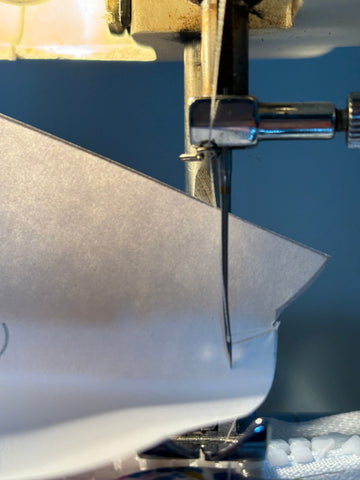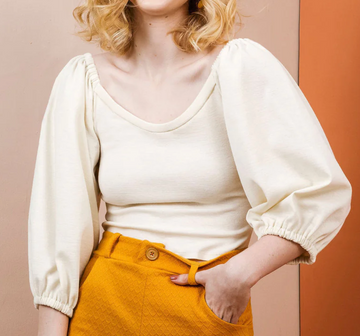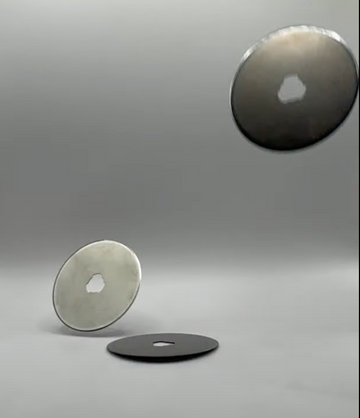We need to talk about your needle drawer.
The one with loose packs of mystery needles, that one Schmetz card from 2018, and at least three rogue 70/10s poking out like sewing shrapnel (Guilty). Look, we’re not judging. But if you’ve ever asked “Why is my thread skipping?” or “Why is my fabric chewing itself up like a toddler with a juice box?”, then your needle is probably to blame.
Let’s fix that.
🧵 Sewing Machine Needles 101
Every needle has a type, a size, and a purpose. Matching the right needle to your fabric is the secret sauce to smoother seams, prettier topstitching, and fewer broken threads (and spirits).
🔧 Common Needle Types (aka, What They’re Actually For)
Universal Needles
The little black dress of needles.
-
Use for: ALLEGEDLY for woven and knit fabrics. In my personal experience, actually pretty much only for wovens and knits with less than 5% stretch.
-
Great for: general sewing, quilting, piecing
-
Sizes: 70/10, 80/12, 90/14 are your go-to
Ballpoint or Jersey Needles
Blunt tip that pushes between knit fibers without shredding.
-
Use for: jersey, rib knit, double brushed poly
-
Avoid for: wovens! They’ll skip and frustrate you.
Stretch Needles
Not the same as ballpoint! These are made for elastic-heavy, slick knits.
-
Use for: swimwear, athletic fabrics, lycra
-
Pro tip: helps avoid skipped stitches on tough knits
Sharps / Microtex Needles
Think precision ninja needle.
-
Use for: high thread-count cotton, batiks, applique, topstitching
-
Sharp point pierces without bending
-
Best with: fine wovens and precision quilting
Denim / Jeans Needles
Built like a linebacker.
-
Use for: denim (duh), canvas, duck cloth
-
Can punch through layers without breaking
-
Sizes: 90/14 or 100/16 are your go-tos
Leather Needles
Triangular point that slices instead of punches.
-
Use for: real leather, vinyl
-
DO NOT use for: faux leather (use a non-stick needle instead)
Embroidery Needles
Special groove to protect thread.
-
Use for: machine embroidery with rayon or poly threads
-
Avoid for: heavy sewing—they’re delicate (and expensive)!
Topstitch Needles
Bigger eye and sharp point = pretty topstitching without thread breakage
-
Use for: visible seams, decorative stitching
-
Great for: heavier threads
Twin Needles
Because two lines are better than one.
-
Use for: hemming knits, pin tucks
-
Looks fancy, stitches like a pro
-
Use with: a zigzag throat plate and two spools of thread up top
📏 What About Needle Sizes?
Think of it like this:
-
Smaller number = finer needle
-
Larger number = stronger needle
So a 70/10 is dainty and great for silks and sheers. An 80/12 is your standard warrior (for your serger too!). A 100/16 will sew through a small car if needed. (Kidding. Mostly.)
🧼 When to Change Your Needle
-
Every 6–8 hours of stitching
-
When fabric starts snagging
-
When thread starts shredding
-
After big projects
-
If you can’t remember the last time, then it’s time
Fresh needles = fewer headaches.
📦 Shortcut: Keep a Stash You’ll Actually Use
The best setup? A simple case of Universal 80/12s, plus backups of stretch, denim, and Microtex. Or if you're like us—just get the Sew Club Supplies Needle subscription and call it a day.
👉 Shop High-Quality Needles Here
🧵 Final Stitch
Using the wrong needle is like cutting fabric with craft scissors. It works…until it really doesn’t. The right needle makes your machine purr, your stitches clean, and your fabric drama-free.
Trust us. Your thread (and your sanity) will thank you.
-E






